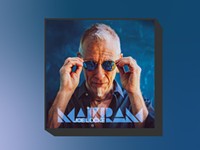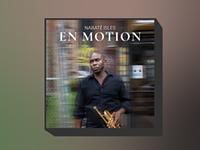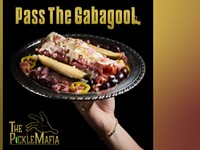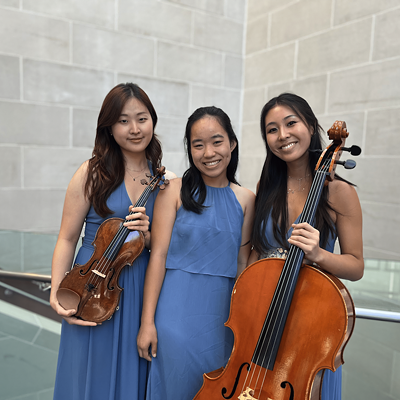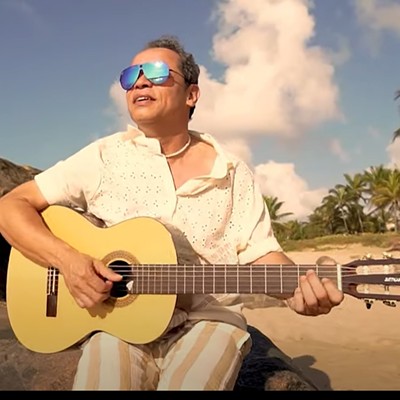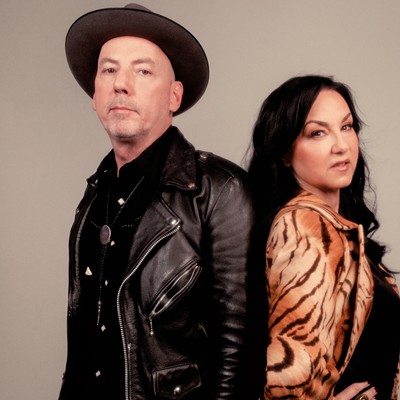[
{
"name": "500x250 Ad",
"insertPoint": "5",
"component": "15667920",
"parentWrapperClass": "",
"requiredCountToDisplay": "1"
}
]
Jazz fans may get a feeling of deja-vu Thursday evening when Bill Dobbins takes the Kilbourn Hall stage to conduct the Eastman Jazz Ensemble. From 1973 to 1994, the name Dobbins was synonymous with the Eastman School's big bands. But in 1994, Dobbins left for Germany to become principal director of Cologne's WDR Big Band, one of the world's top jazz ensembles. Eight years later he's back in the program he helped create.
For his first concert back, Dobbins is pulling out all the stops.
The first half will showcase two of his arrangements for the Cologne band based on Bill Evans' recordings, two charts by composer-arranger Dave Horler, and three miniature pieces by Eastman graduate student Eric Schmitz.
The first half closer, Bill Holman's arrangement of "Limehouse Blues," written for Stan Kenton in 1961, will set the stage for a second half conducted by Holman, a legendary arranger. Among his credits are hundreds of albums by artists ranging from Buddy Rich to The 5th Dimension. He'll be conducting his arrangements of Thelonious Monk compositions and his own recent works.
In Germany, Dobbins got a taste of how seriously jazz can be taken; conducting a big band in Europe is like being principal conductor of a Symphony Orchestra in the United States. Dobbins conducted a third of the concerts, programmed the music, and selected guest artists. He also worked with the 55-piece Netherlands Metropole Orchestra, a big band augmented by 25 to 30 strings, an oboe, French horn, harp, and tympani. It's a 40-year old ensemble that would be unthinkable in America.
"They consider art, music, and theater something that is not just a frill but something that is essential for quality of life," says Dobbins. "The governments make sure that those kinds of things are provided at an admission price the general public can afford."
While in Europe, Dobbins and the band collaborated with soloists like Paquito D'Rivera, Clark Terry, and Benny Golson. His small-group recording, A Tribute to B.A.C.H. (Bill Dobbins/Rolf Römer Quartet), was popular enough to spawn a 20-concert tour.
"We took Bach's themes and developed them in a harmonic and rhythmic idiom more related to what's been happening in jazz for the last 40 years," Dobbins says. "Because Bach was so ahead of his time, the thematic material and ideas worked out very well."
Of course, Bach would not be uncomfortable in contemporary jazz contexts.
"He improvised a lot," Dobbins says. "People who were around when he was alive wrote that a lot of things Bach improvised were even more amazing than what he wrote down."
Dobbins began studying classical piano at the age of nine. When he was 14, a friend played him albums by Erroll Garner, Ahmad Jamal, Dave Brubeck, and the Modern Jazz Quartet.
"It completely changed my life forever, because I realized that this whole harmonic language I was so in love with from the classical tradition, it was really jazz musicians who were continuing to use this music in a more vital, individual and creative way."
Dobbins considers it a blessing that his high school didn't have a jazz program.
"There was an advantage to learning jazz on my own," he says. "It forced me to really go after things and not wait around for somebody to explain it to you and give you all the answers."
When Dobbins entered Kent State University in 1964, there was no big band, so he and a group of students started one, writing their own arrangements and transcribing them from records. It proved to be a valuable lab experience.
Dobbins has maintained his position at the top of his field at home and abroad by adhering to high standards. He refuses, for instance, to embrace the popular music of the last several decades no matter how wide its appeal.
"One of the aspects of the dumbing-down of culture in Western society has to do with the pervasive influence of pop culture and the fact that it encourages people to be ignorant," he says. "In popular music in the 1930s and 1940s, you have people like Gershwin, Harold Arlen, Jerome Kern, and Alec Wilder writing music that was pop music then, who knew an awful lot about music and were always trying to learn more. Today the pop scene is, for the most part, people who don't know anything about music, but they're proud that they don't know anything about it."
The simpler and cruder music is, Dobbins says, the more people respond to it --- even Eastman students.
"Without their even realizing it, a lot of the people they listen to in their spare time, looked at objectively from a musical standpoint, are not nearly as good musicians as the students themselves."
So high are Dobbins' standards, he even rejects the conventional wisdom that The Beatles' music transcended the depths of pop.
"They came up with some catchy tunes, but I don't think there's anything harmonically in what the Beatles did that comes close to what was happening in the 1930s and 1940s. The language of rock 'n' roll, coming from r&b, was so simple --- three or four chords --- that, when the Beatles put a couple chords in there that most people weren't using, it suddenly sounded like some big revelation. If you compare it to the tradition of what people call The Great American Songbook, there's no comparison."
"Herbie Hancock put a CD out called New Standard; the idea was to find examples of contemporary pop music to use as vehicles for improvisation. If he wanted to show that there are popular songs that can still be that kind of vehicle, in fact he proved the opposite. If you objectively take the songs that are on the album, some of them may have interesting melodies, some may have an interesting rhythmic hook, but the way those pieces deal with all three musical elements --- melody, rhythm, and harmony --- together, you can't compare it."
In Dobbins' view there are only a few people writing today who rival mid-20th-century songwriters, citing Johnny Mandel and "a few things by Stephen Sondheim." He believes the melodies of Bill Evans also sit in this tradition.
When discussing the evolution of jazz, Dobbins applies a similarly stringent philosophy. He bemoans the general assumption that artistic and social developments must contain more information and more complexity. He believes progress can happen more simply, through a deeper sense of understanding. He contrasts John Coltrane's approach with that of Bill Evans.
"However great anybody views Coltrane's various periods to be, you have to admit that what he did in any of those periods, whether it's the standards or exercise tunes like 'Giant Steps' and 'Countdown,' the modal period or the free-jazz energy period, that he was mapping out things that he himself never really took the time to explore in depth. He did some things that were really good with all of them, but they're all areas that could be explored for an entire lifetime. Bill Evans didn't try necessarily to go into different styles as he evolved as a player. He carved out an area for himself in his early 30s, during the time he was with Miles and just after that, which was close in its own way to the tradition of the American popular song. He continued for the rest of his life to go deeper and deeper into that."
In addition to his career as a bandleader, pianist, and educator, Dobbins continues to contribute to jazz scholarship. His current project involves the music of Duke Ellington.
In recent years, a large collection of Ellington's scores was discovered and given to the Smithsonian Institute.
"Getting to play that music with that [Cologne] band was a huge revelation. I'd been involved in jazz for all these years. Even though I realized Ellington was important, it hit me like a lightning bolt. At that point I made Ellington's music a specialty in my study."
Dobbins made several visits to the Smithsonian and began transcribing Ellington's arrangements. He's now writing an analytical book on Ellington's composing and arranging techniques, encompassing all of the band's different periods.
Diving deeper into Ellington reinforced Dobbins' decision to choose the big band as a vehicle for expression in the first place.
"To me the big band is the American equivalent of the symphony orchestra," he says. "It's the only ongoing large ensemble that developed uniquely in America and developed around the creative vision of using it as a vehicle for American music. Ellington's music is uniquely suited to study the evolution because he's really the only person who maintained a group year in and year out from the 1920s, when he had virtually the same instrumentation of the New Orleans bands, until the group had grown to the size of a modern big band by the middle of the 1940s."
The Eastman Jazz Ensemble plays a free concert on Thursday, December 5, in the Eastman School of Music's Kilbourn Hall, 26 Gibbs Street, at 8 p.m. 274-1100.
Speaking of Bill Dobbins, jazz
Latest in Music Features
More by Ron Netsky
-
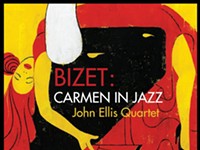
Album Review | 'Bizet: Carmen in Jazz'
Mar 26, 2024 -
'To Swing Is the Thing" by Mike Melito
Aug 10, 2023 - More »

